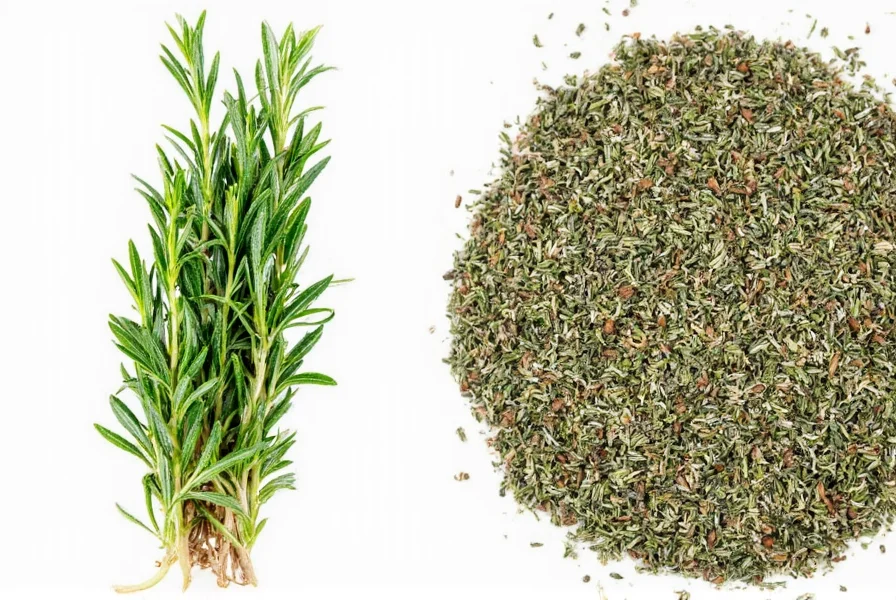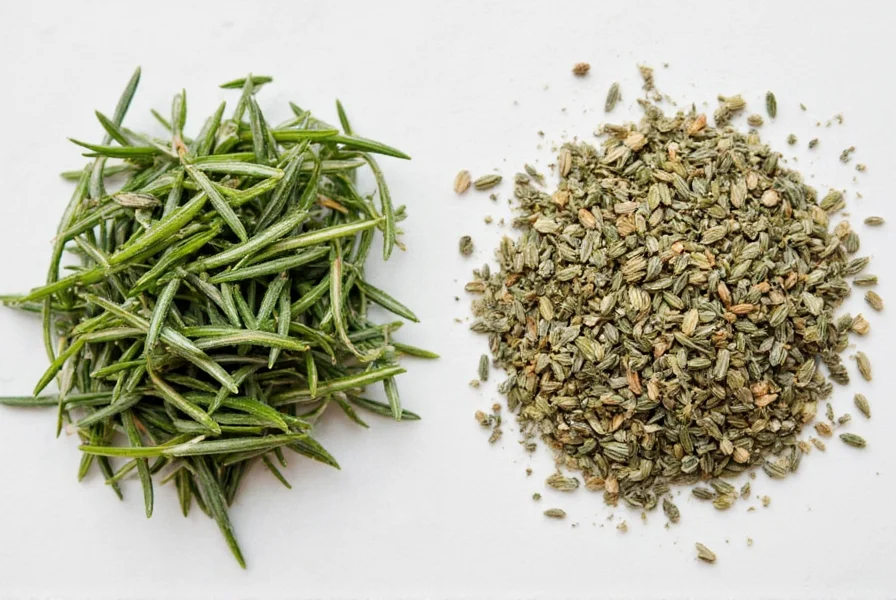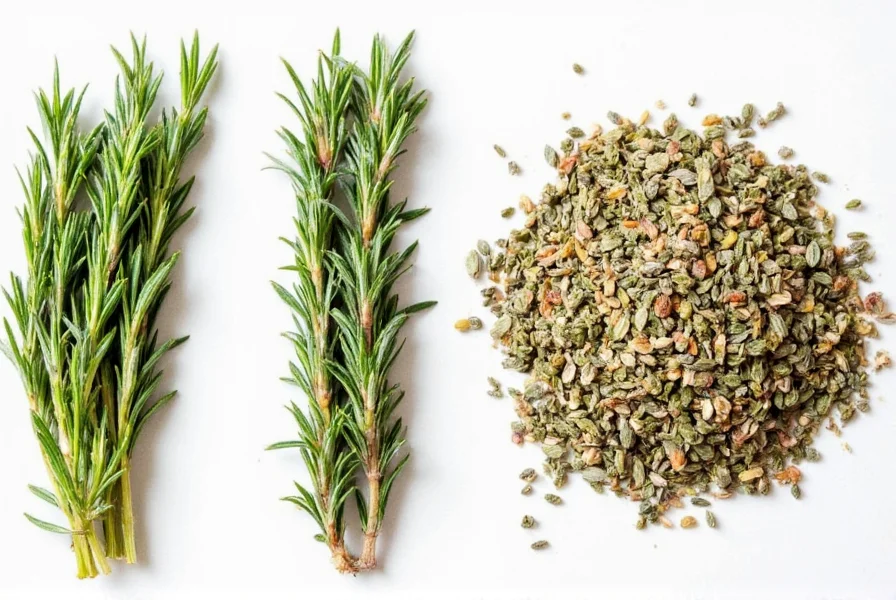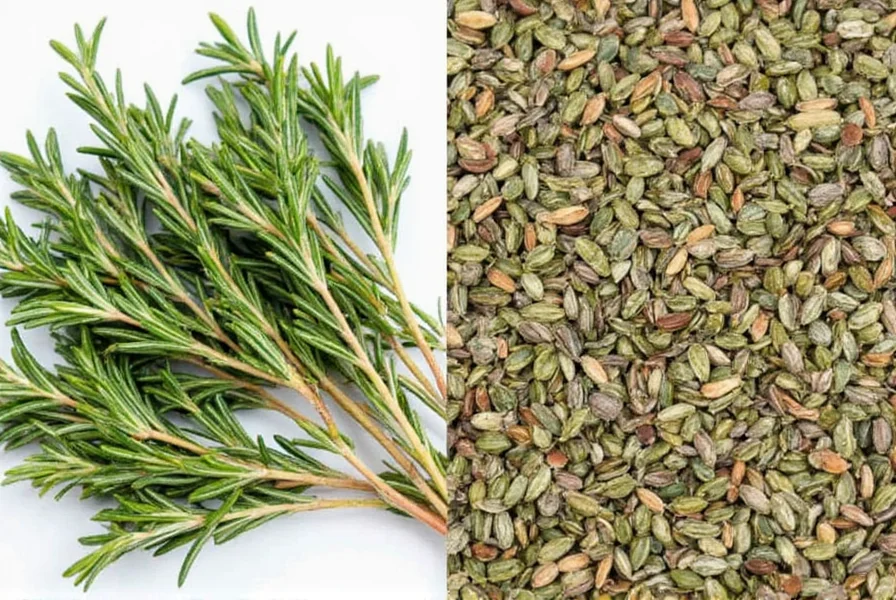Table of Contents
- Introduction
- Flavor Profiles: A Taste Test Between Fresh & Dried Rosemary
- Shelf Life: How Long Does Each Type Last?
- Cooking Hacks: When to Use Fresh or Dried Rosemary
- Storage Tips: Keeping Your Rosemary at Peak Performance
- Buying Guide: Choosing Quality Fresh & Dried Rosemary
- Conclusion
- Frequently Asked Questions
Introduction
When it comes to fresh vs dried rosemary, the choice depends on your dish: fresh rosemary is best for quick-cooking and finishing touches, while dried rosemary shines in slow-cooked dishes and offers longer shelf life. In this article, we'll explore the key differences between fresh and dried rosemary, including flavor profiles, storage tips, cooking applications, and conversion ratios, to help you make the perfect choice for every recipe.

Whether you're prepping Sunday roast or making artisan bread, knowing when to reach for which form of rosemary can elevate your dishes from good to gorgeous.
Flavor Profiles: A Taste Test Between Fresh & Dried Rosemary
Let's start with what really matters: taste.
Fresh Rosemary
Fresh rosemary has a bright, piney aroma that bursts with earthy citrus notes. The needles are tender but firm, packed with essential oils that give it its signature fragrance and flavor.
- Strong, resinous aroma
- Grassy, almost minty edge
- Bold flavor that intensifies during cooking
Dried Rosemary
Dried rosemary, on the other hand, loses some of its volatile oils during the drying process. This results in a more concentrated, slightly woodsy flavor that's less vibrant but still punchy.
- Less aromatic than fresh
- More earthy and robust in flavor
- Better suited for slow-cooked dishes
| Aspect | Fresh Rosemary | Dried Rosemary |
|---|---|---|
| Flavor Intensity | High (aromatic, bright) | Moderate (earthy, robust) |
| Aroma | Strong, fresh, pine-like | Weaker, woody, muted |
| Best For | Top-of-the-hour finishing touches, garnish | Slow-simmered sauces, marinades, baked goods |

Shelf Life: How Long Does Each Type Last?
If longevity matters to you — and let's face it, who wants to waste herbs? — then shelf life becomes a key factor.
Fresh Rosemary
Fresh rosemary doesn't last forever. If not stored properly, it can wilt, discolor, or become moldy within days.
- Refrigerated: up to 2 weeks if wrapped in a damp paper towel and placed in a plastic bag
- Stored in water like a bouquet: about 5–7 days
- Freezing: up to 6 months in ice cube trays with oil or water
Dried Rosemary
Dried rosemary wins the marathon when it comes to staying power.
- Pantry storage: 1–3 years
- Keep away from moisture and light
- Store in airtight containers
| Type | Shelf Life | Storage Tip |
|---|---|---|
| Fresh | Up to 2 weeks (refrigerated), 6 months (frozen) | Wrap in paper towel, store in fridge |
| Dried | 1–3 years | Airtight container, cool dark place |
Cooking Hacks: When to Use Fresh or Dried Rosemary
The form of rosemary you choose can dramatically affect the outcome of your dish. Here are some real-world scenarios and tips for maximizing flavor:
Use Fresh Rosemary When…
- You want an aromatic finish — think sprinkled over focaccia or stirred into olive oil for dipping
- Cooking at high heat — fresh rosemary holds up surprisingly well under roasting temperatures
- Preparing dishes where texture adds interest — like in compound butter or herb paste
Use Dried Rosemary When…
- Slow-cooking or baking — dried herbs infuse deeper flavor over time
- When convenience is key — no washing or chopping required
- Used in spice blends or rubs — integrates better with other spices
Pro Hack: Substitute Wisely
Did you know they're not interchangeable 1:1? Here's a cheat sheet:
- 1 tablespoon chopped fresh rosemary ≈ 1 teaspoon dried rosemary
- Adjust to taste — dried can be stronger!

Storage Tips: Keeping Your Rosemary at Peak Performance
To keep your rosemary tasting great and lasting long, proper storage is key. Here's how to make the most of both types:
Storing Fresh Rosemary
- Short-term: Store in a plastic bag in the crisper drawer
- Medium-term: Stand in a glass of water on the countertop like flowers
- Long-term: Chop and freeze in oil cubes for easy sautéing later
Storing Dried Rosemary
- Keep in an airtight container
- Store in a cool, dark cabinet
- Label with date — it loses potency after a year
Smart Storage Ideas
- Make infused oils with extra fresh rosemary
- Dehydrate excess fresh rosemary at home for custom dried batches
- Grow your own rosemary plant for year-round freshness

Buying Guide: Choosing Quality Fresh & Dried Rosemary
Not all rosemary is created equal. Whether you're shopping at a farmer's market or browsing supermarket shelves, here's how to pick the best:
Fresh Rosemary Buying Tips
- Look for deep green, supple needles
- Avoid brown or brittle sprigs
- Smell test — it should be fragrant and piney
- Buy small bunches if you don't cook often
Dried Rosemary Buying Tips
- Check for color — vibrant green-brown means freshness
- Avoid overly dusty or powdery textures
- Opt for whole leaves or crushed pieces over powder unless specified
- Read ingredient labels — avoid additives or preservatives
Product Spotlight: Top Picks
1. Nature's Way Organic Dried Rosemary
- Features: 100% organic, finely crushed
- Advantages: Strong flavor, ideal for seasoning blends
- Use Cases: Marinades, soups, stews
- Target Audience: Health-conscious cooks, meal prep enthusiasts
- Occasion: Everyday cooking
2. Simply Organic Rosemary Sprigs
- Features: Whole sprigs, sustainably sourced
- Advantages: Perfect for roasting, grilling, or steeping
- Use Cases: Herb-infused oils, roasted chicken, lamb chops
- Target Audience: Home chefs, gourmet food lovers
- Occasion: Special meals and dinner parties
3. McCormick Gourmet Rosemary Leaves
- Features: High-quality, non-GMO, consistent texture
- Advantages: Reliable brand, affordable
- Use Cases: Baking, seasoning, stuffing mixes
- Target Audience: Casual cooks, families
- Occasion: Weeknight dinners, holiday meals

Conclusion
Whether you're team fresh or team dried, there's no wrong choice when it comes to rosemary — just the right one for your recipe. Fresh offers boldness and brightness, perfect for quick dishes or garnishes. Dried delivers depth and durability, ideal for simmered sauces, rubs, and pantry-ready convenience.
Now that you've got the lowdown on fresh vs dried rosemary, you're ready to conquer the kitchen with confidence. So go ahead — crush those recipes, roast that meat, bake that bread, and season like a pro!

Remember: the best herb is the one you'll actually use — and now you know exactly how to use both!
Frequently Asked Questions
Is fresh rosemary stronger than dried rosemary?
Actually, dried rosemary is more concentrated in flavor. While fresh rosemary has a brighter, more complex aroma, the drying process concentrates the essential oils. This is why you typically use less dried rosemary (about 1/3 the amount) compared to fresh in recipes.
What's the conversion ratio between fresh and dried rosemary?
The standard conversion is 1 tablespoon of fresh rosemary equals approximately 1 teaspoon of dried rosemary. However, this can vary based on the quality and age of your dried rosemary. Always start with less dried rosemary and adjust to taste, as it can become overpowering.
Which is more cost-effective: fresh or dried rosemary?
Dried rosemary is generally more cost-effective in the long run. While fresh rosemary might cost less per ounce initially, dried rosemary lasts 1-3 years compared to fresh's 2-week shelf life. When calculating cost per use, dried rosemary often comes out ahead, especially if you don't cook with rosemary frequently.
Can I substitute dried rosemary for fresh in baking?
Yes, but with adjustments. In baking applications like bread or focaccia, you'll want to use about 1/3 the amount of dried rosemary compared to what the recipe calls for in fresh. Dried rosemary also benefits from being crushed between your fingers before adding to dough to release more flavor.
Does cooking method affect which type I should use?
Absolutely. For quick-cooking dishes (under 30 minutes), fresh rosemary is preferable as it retains more flavor. For slow-cooked dishes (stews, braises, soups), dried rosemary works better as it has time to rehydrate and distribute its flavor throughout the dish. High-heat methods like roasting work well with fresh rosemary, while seasoning blends and rubs often use dried for better adhesion.
How can I make my own dried rosemary at home?
To dry rosemary at home, bundle small sprigs together and hang them upside down in a warm, dry, dark place for 1-2 weeks. Alternatively, spread sprigs on a baking sheet and dry in the oven at the lowest temperature setting (around 170°F/75°C) for 2-3 hours until brittle. Store in an airtight container away from light and moisture.











 浙公网安备
33010002000092号
浙公网安备
33010002000092号 浙B2-20120091-4
浙B2-20120091-4